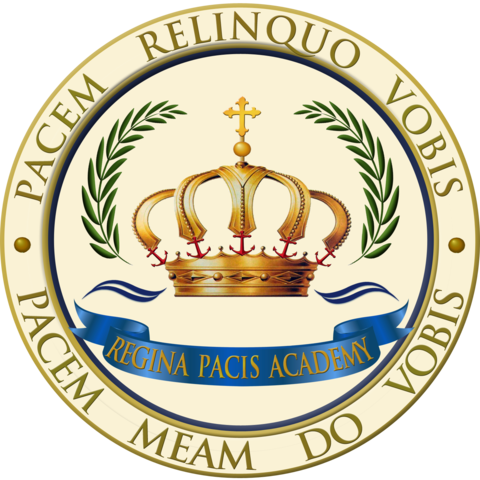Catholic schools are at a crossroads when it comes to curriculum, the use of technology in the classroom, and Catholic instruction. There is concern around the question, "What should be at the heart of a Catholic education?" Dr. R. Jared Staudt, Associate Superintendent for Mission and Formation in the Archdiocese of Denver and Visiting Professor for The Augustine Institute, recently posed a few answers to that question in his article entitled "How to Save the Soul of our Catholic Schools", which we look at below.
Here are some practical points, which Dr. Staudt recommends and which can already be found in a Catholic school like Regina Pacis Academy, that parents should look for if they are seeking an authentically Catholic school for their children.
Rooted In the Classics
Catholic schools are currently going through a transformative period, as there are decisions to be made not only about curriculum, but technology use in the classroom, and what the true mission is of Catholic education. The classical education curriculum is based on the cultivation of faith and reason to allow for full human flourishing. This educational vision was the gold standard of formation for centuries, forming many of the holiest and most beloved saints and keenest minds in history. The classical model of education though finds its apex specifically in Catholic schools because it is only in these schools that this formation is Christocentric - centered on the Person of Christ. Catholic classical schools seek to recover the Church's rich heritage in the formation of the whole person made in the image and likeness of God - so that more than just preparing a student for a future career, it frees them to know, to love, and to live joyfully in the Truth of Jesus Christ.
Unfortunately, many Catholic schools have abandoned the classical teaching style of the church for a more secular approach to education. Returning to classical education is not merely about adopting a new model or program for education - it is about raising students who can recognize the hands of the Creator in the truth, goodness, and beauty in the world around them. Any attempt at renewing Catholic schools through a classical curriculum without placing Christ at the center will be woefully incomplete.
Technology In the Classroom
While technology has a time and a place, it is often misused in educational settings. It is used as a crutch instead of as a support tool. A classical education that does not rely on technology better prepares a child for forming their own thoughts, using their own analytical skills to solve problems, and becoming self-reliant.
It is estimated that about 1.5 million children are currently enrolled in preschool. Many of those children will begin their academic careers in a Catholic school setting. Children should be taught in the classical Catholic tradition from the earliest age, and they should learn not to depend on technology from the very start.
The Right Choice For Catholic Education
Catholic schools have always been heralded as premier educational settings. Catholic schools are part of a long tradition of educating some of the finest thinkers to ever walk this earth, and have produced an overwhelming educational, artistic, literary, and cultural legacy. As Dr. Staudt notes in his article, "We have to immerse our students in the living legacy of Christian culture so they can be formed by it, live it, and pass it on to the next generation."
Catholic classical education is an education for everyone, students of all abilities and backgrounds who flourish as they develop tools of critical thinking and discover wondrous connections across the curriculum and within the world God made. These students form habits of mind and heart that will serve them throughout life, as they learn to grow in both intellectual and moral virtue.
If you want a school that nurtures your child's soul, not just their mind, through the time-tested Catholic classical curriculum, look no further than Regina Pacis Academy.


